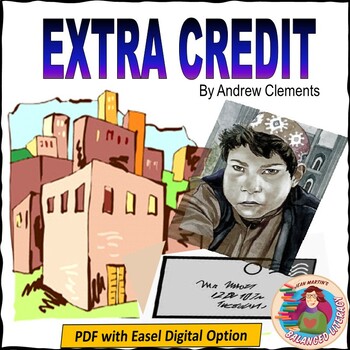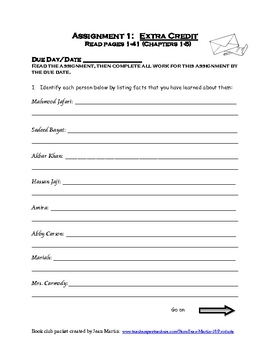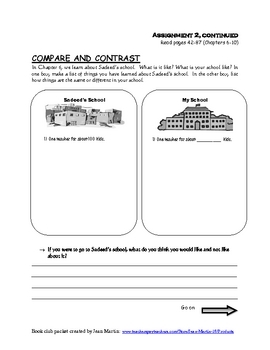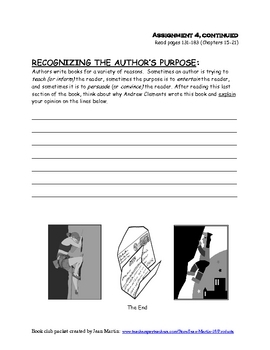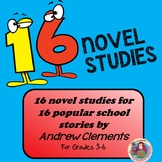EXTRA CREDIT, by Andrew Clements: A PDF/EASEL Book Club Packet
- PDF
Also included in
- Who doesn't love a great deal? This packet includes sixteen ready-to-use novel studies for 16 of the "school stories” written by best-selling author, Andrew Clements. The novel studies are designed for teachers to use with students in grades 3-6. Each of these novel studies is also available for saPrice $75.95Original Price $113.25Save $37.30
Description
This is an independent-work, custom-designed packet created to support CCSS for students in grades 4-7 as they read EXTRA CREDIT by Andrew Clements. The packet may be printed and/or used digitally by uploading to Easel. If you are not familiar with Easel digital products, here are a few links you can follow to better understand: What is Easel by TpT? Getting Started Guide FAQ for Buyers
Included are 18 student pages which divide the text into four reading assignments with questions and tasks to go with each one. In addition, a bookmark master is included to help students keep track of vocabulary words while reading the text. An answer key is also included. Teacher should encourage sharing of new vocabulary and may have students share verbally with the group or activities to reinforce or practice the vocabulary.
The questions and tasks in this booklet cover and reinforce the skills that good readers and writers need. These include vocabulary, comprehension, inference, compare and contrast, summary writing, visualization, interpreting expressions, and determining author’s purpose. The packet gives students practice in writing to explain their thinking and to demonstrate their understanding through higher level thinking tasks. The booklet is designed for independent work so that students can work on this in class while the teacher is meeting with another group.
In my classroom, students are responsible for completing one reading assignment with the accompanying questions/activities each week. Depending on the reading and writing level of your students, a teacher may decide to allow students more time or less time to complete an assignment. It is suggested that upon completion of an assignment, students meet as a group with the teacher or aide to discuss the book and review the assignment.
Extra Credit in a Nutshell:
Another popular school story by best-selling author, Andrew Clements! Illinois student Abby Carson, is about to flunk out of sixth grade and she’s desperate! She’ll do anything to correct her bad record: even extra credit. Her extra credit project provides the reader with the unique opportunity to view the Middle East and Afghan culture through the eyes of Sadeed, Abby’s pen pal. This is a multicultural book that students will enjoy, and it is bound to stimulate lively discussions.
This book won the Christopher Award for Books for Young People in 2010
Appropriate for students in grades 4-7. Reading level is approximately 5th grade.

